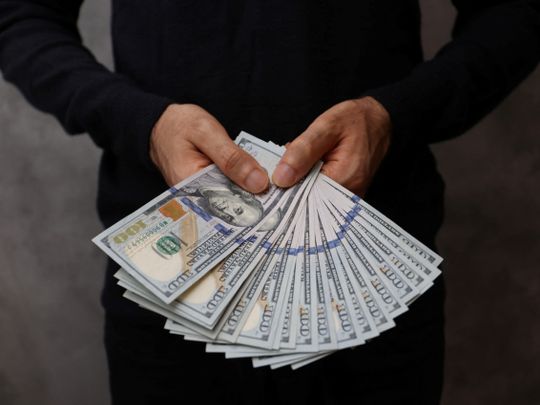
Washington: The dollar inched up on Thursday but struggled to make bigger gains as the boost from a still hawkish Federal Reserve was tempered by investors’ growing appetite for riskier assets, driven by China’s reopening.
Minutes of the Fed’s December policy meeting released overnight showed while officials agreed that the central bank should slow the pace of aggressive interest rate increases, they remained focused on curbing inflation, and were worried about any “misperception” in financial markets that their commitment was flagging.
Minneapolis Fed President Neel Kashkari also said on Wednesday he saw the Fed’s target interest rate peaking at 5.4 per cent, higher than current market expectations of just under 5 per cent.
The greenback gained some ground on Thursday after a muted reaction to the Fed’s hawkish rhetoric overnight, with sterling last 0.16 per cent lower at $1.2039, after rising 0.76 per cent in the previous session.
The euro was steady at $1.0605, following a more than 0.5 per cent overnight gain.
Against a basket of currencies, the US dollar index edged 0.06 per cent higher to 104.27, after sliding 0.5 per cent on Wednesday.
“The minutes were largely within expectations -- no cuts expected (this year), that’s what the dot plot was already pricing,” said Christopher Wong, a currency strategist at OCBC.
“Long story short, the markets are not buying the Fed’s dot plot.” Effects of the Fed’s aggressive rate hikes last year have already been felt in the US economy, with a survey from the Institute for Supply Management (ISM) showing manufacturing activity contracted again in December. Nonetheless, the country’s labour market remains tight, as US job openings fell less than expected in November.
“The message is still that the labour market remains in pretty rude health,” said Ray Attrill, head of FX strategy at National Australia Bank (NAB).
Other currencies
The Australian dollar was last 0.39 per cent lower at $0.6812, after rallying 1.7 per cent overnight on news that China’s state planner has allowed three central government-backed utilities and its top steelmaker to resume coal imports from Australia, marking the first such move since Beijing imposed an unofficial ban on coal trade with Canberra in 2020.
The kiwi fell 0.24 per cent to $0.6276, after gaining 0.7 per cent in the previous session.
“The Aussie dollar has obviously benefitted from the coal story,” said NAB’s Attrill, adding that most other commodity currencies were supported.
In Asia, the Japanese yen firmed at 132.58 per dollar, as traders bet that the Bank of Japan (BOJ) may soon fully abandon its controversial yield curve control.
The BOJ is putting more emphasis on an inflation gauge that excludes fuel costs and will likely raise its projections for the index’s growth in quarterly forecasts due this month, sources told Reuters.
Elsewhere, the Chinese yuan steadied around a four-month high against the dollar, with the onshore yuan last changing hands at 6.8807 per dollar, as the currency continues to be underpinned by China’s reopening measures.
China will reopen the border with its special administrative region of Hong Kong on Sunday for the first time in three years.











